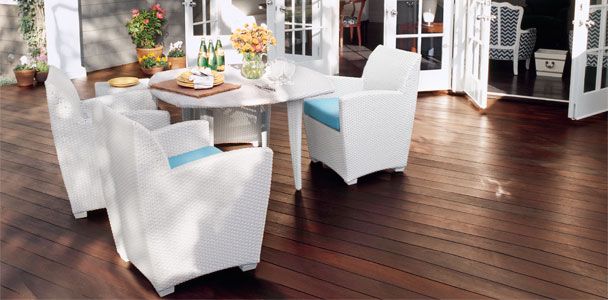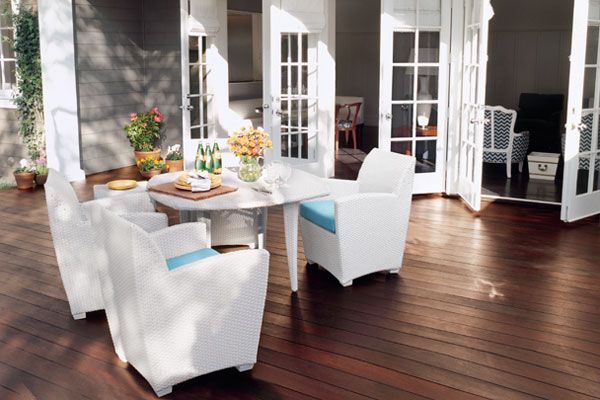
There’s a reason they build boardwalks out of tropical hardwood—it’s dense and hard enough to shrug off just about anything else you or your local environment can throw at it. While it costs more upfront and needs regular maintenance, the natural beauty and longevity of hardwood decking can make it a worthwhile choice for many homeowners. Whichever grain you go with, here’s everything you need to know to make sure you don’t go wrong.
Hardwood Decking Overview: Ipe and Other Options
Ipe (pronounced EE-pay), the most durable and best-known of the Brazilian hardwoods, is three and a half times as hard as teak. Its natural oils deter pests, rot, and decay so well that you could pound a stake of it into the dirt, come back 25 years later, and expect to find it intact. Above-ground, ipe can last up to a century—longer than it takes to grow in the first place—making it one of the “greenest” choices available, assuming it’s sustainably harvested. Incredibly, this wood has the same fire rating as steel and concrete.
Add in its rich brown luster, and ipe is the ideal material for decking. Such performance comes at a price, of course, but anyone who decides to make the investment in hardwood decking has other choices, too. Lesser-known tropical species such as cumaru, garapa, cambara, massaranduba, and tigerwood are also great options. A relatively new candidate for a deck that’s as durable as it is attractive comes from Thermory, which takes domestically harvested white ash—the stuff of baseball bats—and heat-treats it in such a way that it’s rendered rot-resistant and extremely stable.
Shown above: Deck boards made of ipe, sometimes called Brazilian walnut for its handsome hue, provide a stunning backdrop for this outdoor furniture.
Hardwood Decking Considerations
Here are a few considerations to keep in mind when evaluating your deck options:
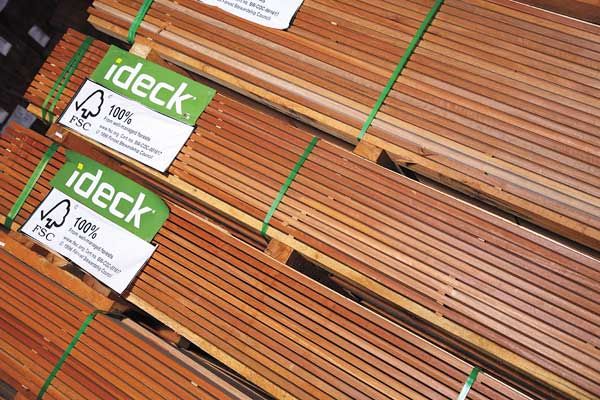
- Ipe decking cost: Ipe wood decking costs an average of about
$14per square foot, but costs can range between $50 and $80 per square foot when you factor in installation. - Warranties: Some companies offer warranties of three to 25 years on certain woods, excluding insect damage and minor issues, such as stains, scratches, or checks—the shallow cracks on the wood surface. Your best guarantee? Buy from a reputable supplier.
- Kiln- or air-dried: All hardwood decking except ipe must be kiln-dried to minimize shrinkage and warping after installation.
* Cost data in this section sourced from contractor estimates used by Angi.
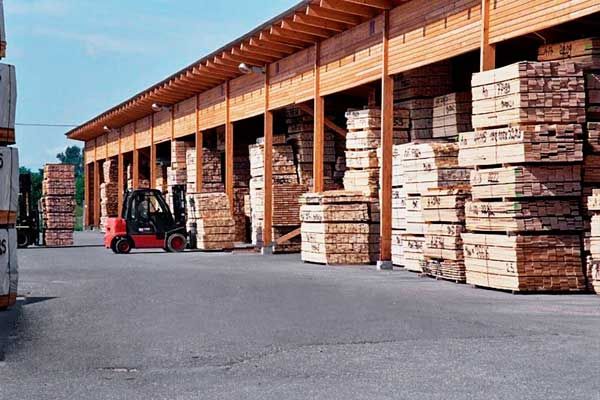
Is Hardwood Decking Right For You?
Here are the benefits and drawbacks of hardwood decking:
Hardwood Decking Pros
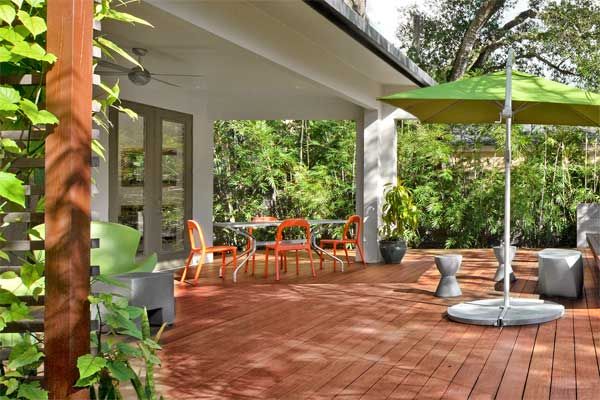
- Luxury look: Premium composite decking can mimic the rich appearance of these beautiful boards
- Tough: All these decking boards are hard enough to stand up to hail, claws, and high heels
- Durable: They’re immune to insects and rot, even if they come in contact with the ground
- Stable: These hardwoods don’t shrink as much as pressure-treated softwoods or expand and contract with temperature fluctuations like plastics and composites do
- Fire-resistant: If a hardwood deck does catch fire, it won’t billow toxic smoke like one made of composite boards or pressure-treated lumber will
Hardwood Decking Cons
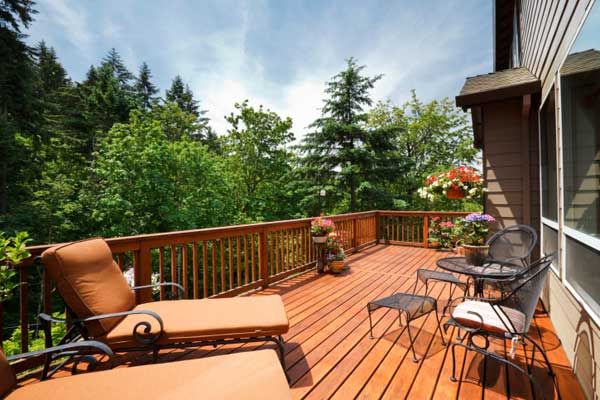
- Pricey: The least-expensive hardwood decking is at least twice the price of pressure-treated pine
- No grading standards: It’s up to you to determine the quality of your supplier’s inventory—look for boards that are clear (free of defects) on one face and two edges
- Stubborn: Ipe and its rock-hard ilk resist drill bits and saw blades, which slows down installation
- Hot: The denser and darker the wood, the hotter it gets in the sun—a liability for bare feet
- Regular maintenance: Unless you want your deck to turn gray, you need to oil it to preserve the color
Pick a Wood Species for Your Hardwood Decking
Here are the most common wood species you can choose from for your hardwood decking project:
Ipe
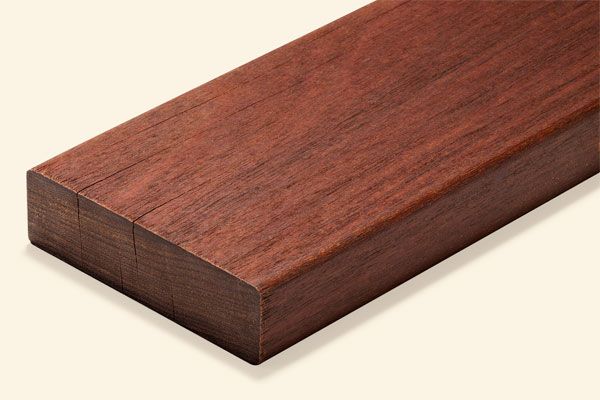
- Price: $8–20 per linear foot*
- Density: 69 pounds per cubic foot
- Character: A dense wood with a brown or olive cast
- Workability: Difficult—slows down even carbide-tipped blades
* All prices are approximate based on an average of prices that our team found from hardware stores like Lowes and Home Depot, and on Amazon.com for non-grooved, non-FSC-certified 14 decking boards. Shipping is not included.
Cumaru
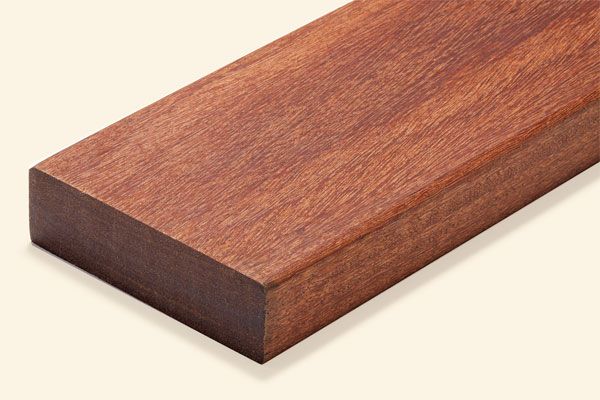
Price: $2.90 per linear foot
Density: 68 lbs. per cubic foot
Character: More red than brown, with a grain-like teak
Workability: See ipe
Massaranduba
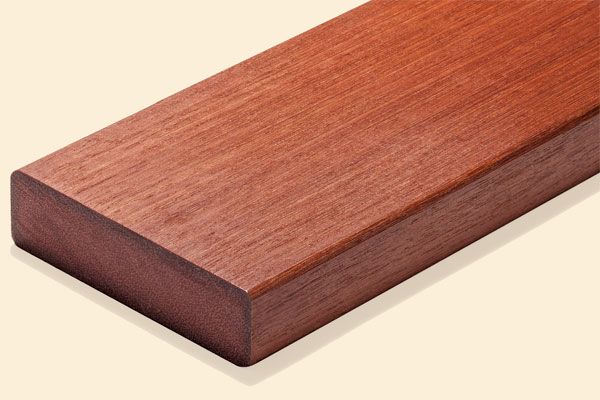
Price: $3.30 per linear foot
Weight: 67 lbs. per cubic foot
Highlight: Reddish brown, with a straight, subtle grain and is prone to checking
Workability: More difficult to cut than ipe
TigerWood
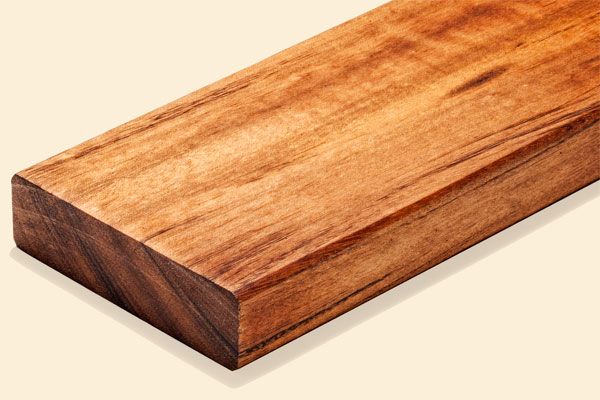
Price: $2.45 per linear foot
Density: 58 lbs. per cubic foot
Character: Orangey with intermittent dark streaks
Workability: Moderate, carbide-tipped bits and blades are not mandatory
Garapa
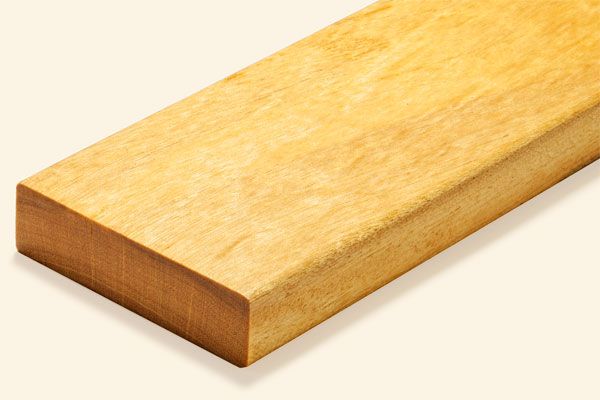
Price: $3.72 per linear foot
Density: 51 lbs. per cubic foot
Character: Honey color goes gray very quickly
Workability: Easy, saw blades cut in one pass
Cambara
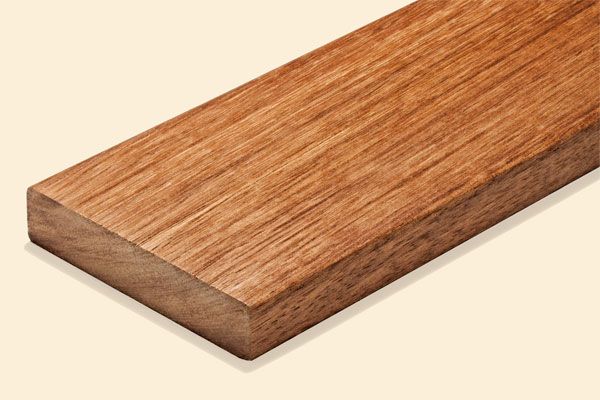
Price: $3.93 per linear foot
Density: 37 lbs. per cubic foot
Character: Mahogany-like, with a contrasting grain
Workability: Easy
Heat-Treated White Ash
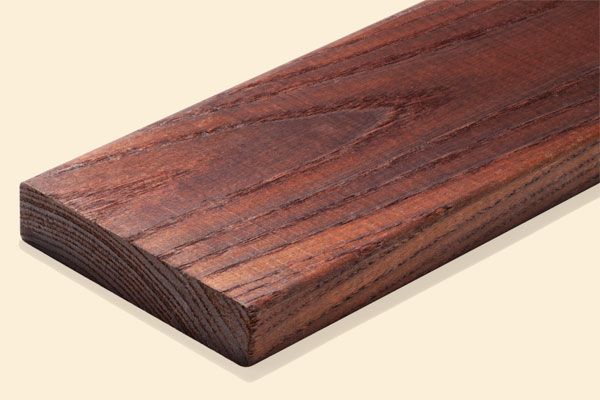
Price: $6.49 per linear foot
Density: 37 lbs. per cubic foot
Character: Coffee-brown, with a pronounced grain
Workability: Easy as pine
Keep the Forest Green
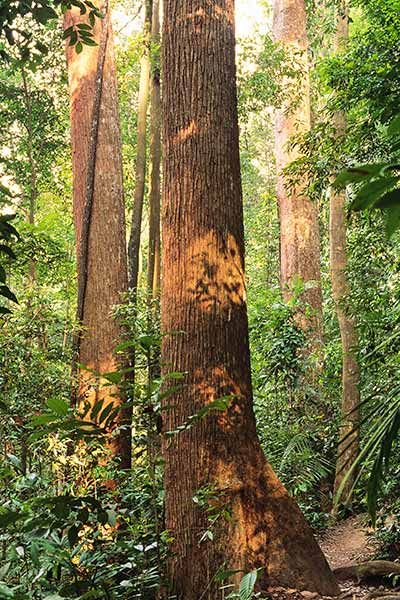
The only way to be sure that your hardwood decking is not contributing to deforestation is to look for the logo of the Forest Stewardship Council (FSC), which certifies that the wood comes from a sustainably managed forest. Though FSC certification can add 25% to 50% to the cost of decking, the standards limit the size of clear-cuts, protect waterways by retaining trees along their shores, protect water quality, prohibit the use of highly hazardous chemicals, and protect rare species.
Design Considerations For Your Hardwood Deck
Here are the key design elements you’ll get to choose from for your new deck:
Pattern
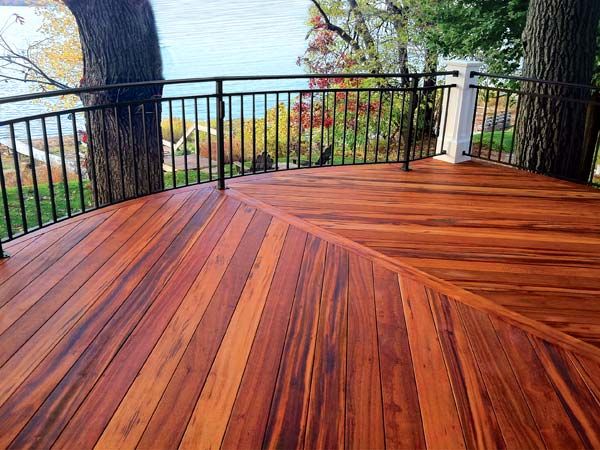
Angling the boards in a chevron pattern, as on this tigerwood deck, moves the eye toward the view. Hardwoods are suited to making diagonal patterns because of their stiffness. Joists can be spaced 16 inches on-center instead of 12 inches, as they must be when using pressure-treated wood.
Shown: 5/4×6 grooved tigerwood decking, about $4.14 per linear foot, AdvantageLumber.com
Multiple Levels

Steps set on a diagonal play off the pattern in the upper deck while offering casual seating. This decking is thermally modified white ash, a walnut-colored wood with a pronounced grain. It’s used here in combination with light-colored western red cedar, providing a striking dark accent on the privacy screen, pergola, and stair risers.
Shown: 1×6 grooved, thermally modified white ash, about $9.48 per linear foot, ThermoryUSA.com for dealers.
Contrasting Border

The builder of this deck used light-colored garapa to define the edge of a dark field of ipe. Maintaining that color difference requires regular applications of a UV-absorbing finish, though this border treatment will still be evident if all the wood goes gray.
Shown: 1×6 grooved ipe, about $4.49 per linear foot, and 1×6 grooved garapa, about $2.87 per linear foot, AdvantageLumber.com
Mixed-Width Boards
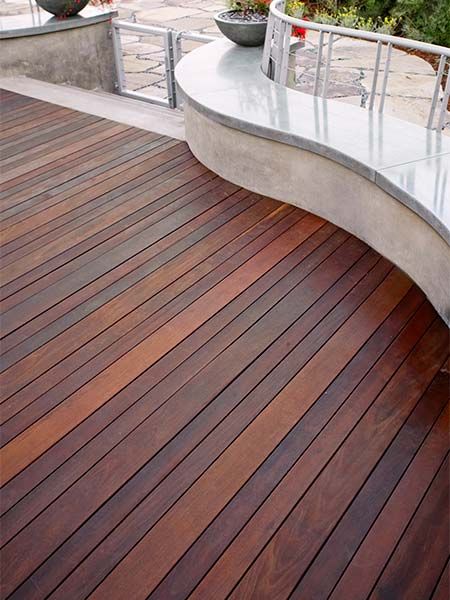
Using different widths is an easy way to create a refined architectural look. In this case, a pair of narrow boards is alternated with a wider one in a repeating pattern.
Shown: 1×4 grooved ipe, about $3.58 per linear foot, and 1×6 grooved ipe, about $4.49 per linear foot, AdvantageLumber.com
Choosing Posts and Rails for a Hardwood Deck
Here are the types of rails and posts you can combine with your deck.
Composite
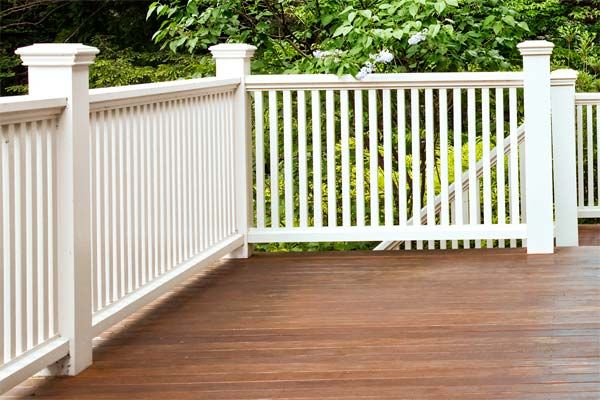
If you like a clean look, this option offers imperviousness and contrasts crisply with dark tropical decking. It also cleans up easily with a blast from the garden hose.
Cable Rail
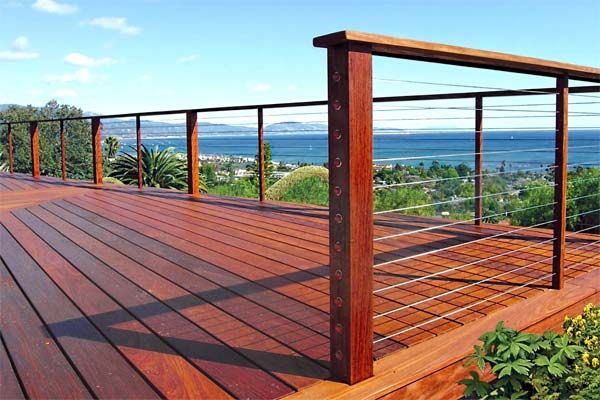
Install posts and handrails milled from hardwood or fabricated from steel, and thread horizontal cables through them in place of vertical balusters—just check local building codes for spacing.
Choosing Posts and Rails for a Hardwood Deck: Metal Balusters

For an appropriately enduring material to go with hardwood, powder-coated aluminum and galvanized steel are strong and attractive and need only occasional washing.
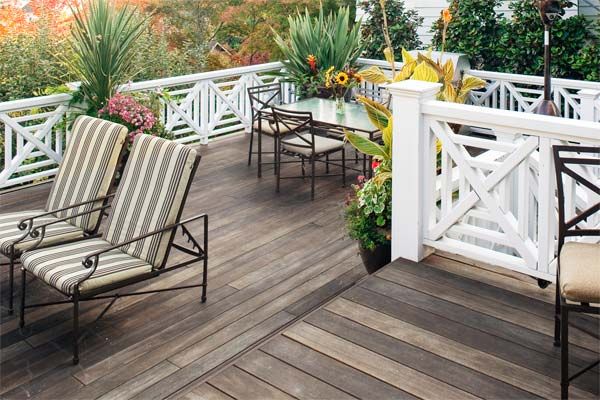
Many decking suppliers also furnish posts, rails (top and bottom), and balusters milled from the same species as the decking. Keep it a rich wood tone, or paint it for contrast, like the Chippendale railing here.
Custom-Milled Profile Joint Types for Hardwood Decks
Here are the various joint types available for the boards in your decking.
Thermory JEM Joints
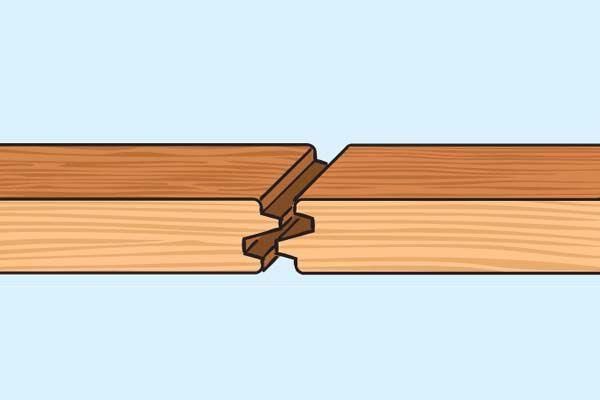
Interlocking ends butt together between joists, saving the time and material you’d waste by cutting each board back to the nearest support.
Iron Woods Vanish Decking
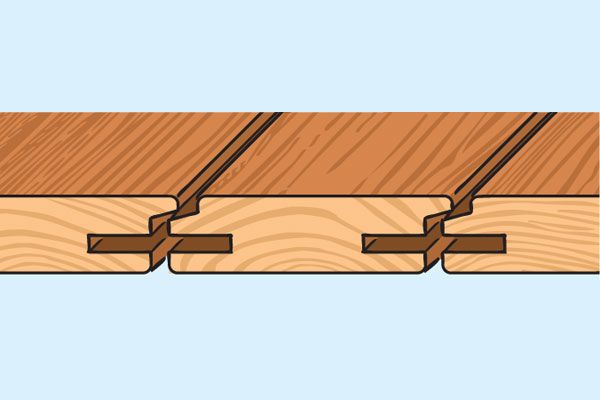
A shiplap profile truly hides clips and grooves while leaving space for the boards to breathe.
Hardwood Deck Installation Strategies
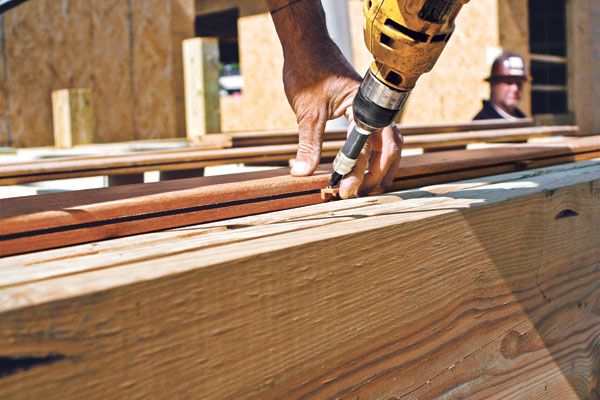
There are things to consider when building a deck with hardwood:
Framing
It’s fine to build the structure from pressure-treated lumber, given that it’ll be protected from UV rays by the decking. Just be sure to flash properly where it meets the house—don’t let aluminum come into contact with treated wood—and use pressure-treated-wood-rated fasteners.
Ventilation
Any deck needs adequate space underneath it for air to circulate. Otherwise, moisture from the ground builds up and causes the boards to cup and swell. If the joists can’t be at least a foot off the ground, use 1/2×4 boards for their stability over thinner, wider stock.
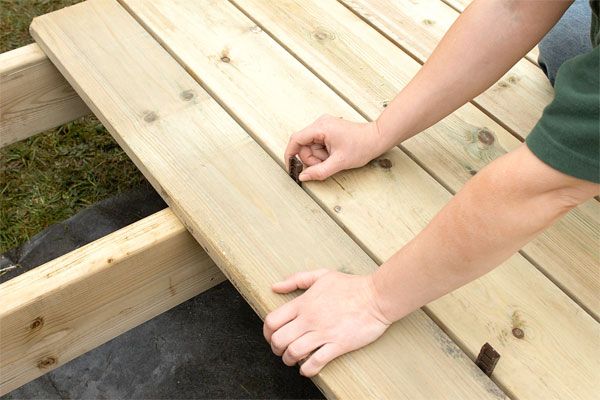
Spacing
Though far more stable than pressure-treated woods or composites, kiln-dried hardwoods expand and contract slightly across their width. Follow supplier recommendations to set the gaps.
Drilling and Cutting
The sawdust may not contain the heavy metals found in pressure-treated boards, but with some of these species it will irritate skin and respiratory passages. It’s best to wear an N100 respirator and protect your skin when the dust flies.
Sealing
After cutting a board to length, seal the end grain with a water-based wax sealant, such as Anchorseal, to prevent checking and splits near the ends.
Methods To Fasten Hardwood Boards to Joists
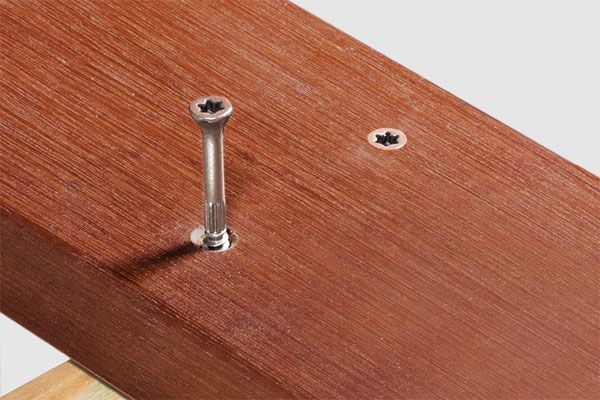
However you choose to attach hardwood decking, you’ll need plenty of elbow grease and stainless-steel fasteners. Here are our picks for each method.
Face Screws
SplitStop Exotic Brown stainless-steel screw: The serrated head countersinks into all but ipe and is painted to hide the shine. These are simple to install, low cost, and easy to back out when replacing a board. About $10.65, SplitStop
Screws and Plugs

Starborn Smart-Bit Pro Plug System: The bit bores a stepped hole, one for the screw and one to accept a glued wood plug of the same species. These have an attractive finish yet a slow, multistep install. About $10.55, Starborn Industries, Inc.
Hidden Fasteners
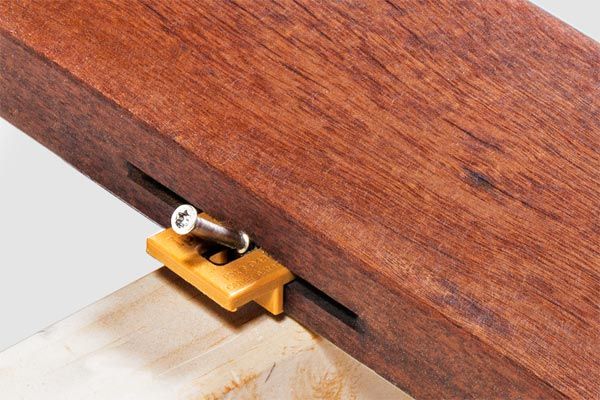
DeckWise Ipe Clip: These slip into a grooved edge and guide angled pilot holes and screws through the groove and into the joist on one side only. These can double as a spacer. About $133.95 for 175 clips, Ipe Clip
Edge Screws
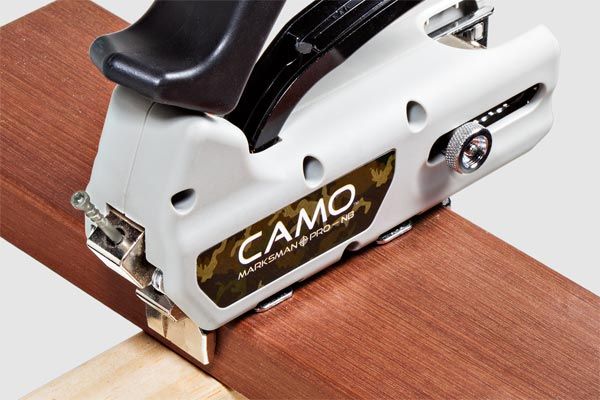
Camo trim-head deck screw: The jig directs screws at a consistent angle through both edges of the board and into the joist. It buries the screw heads out of sight and has a fast install and clean look. About $108.00 for 1,750 screws, CAMO Fasteners
Face Nails
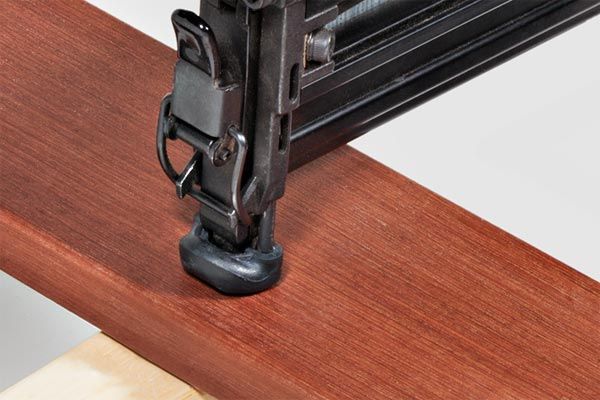
2 1/2-inch stainless-steel nails plus DAP Smartbond: A finishing nailer set at 100 psi shoots nails through 1-inch boards set in polyurethane adhesive. “Quick and easy,” says This Old House general contractor Tom Silva. About $28.48 for 1,000 nails, SENCO
Keep Your Hardwood’s Gray at Bay
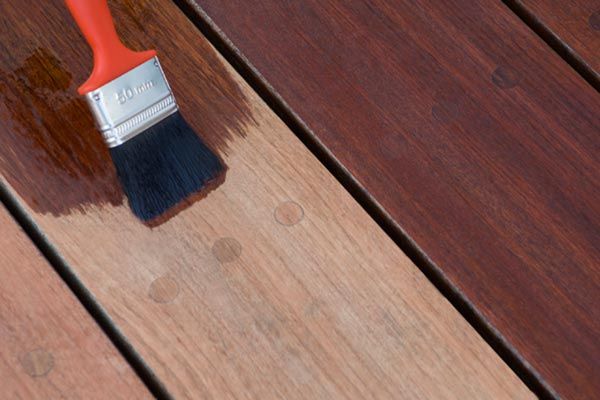
As beautiful as hardwoods are, ultraviolet light soon fades their vibrant color. To preserve it, you’ll need to apply a high-quality UV-inhibiting penetrating oil specifically formulated for this dense material. The shortlist of oils to consider includes those by Penofin, Olympic, Messmer’s, Duckback, DeckWise, Cabot, and Thompson’s WaterSeal.
Hardwoods don’t easily absorb stains or oils, so treat your deck like a giant piece of furniture. Starting with a clean, dry surface, brush on the finish and wipe off the excess with a clean rag. Reapply it once a year or whenever the gray starts to return. And if you neglect your deck and it goes gray, don’t fret—even after many years in the sun, the natural look can be restored by cleaning with oxygen bleach and then oiling.
Damage-Free Hardwood Deck Cleaning
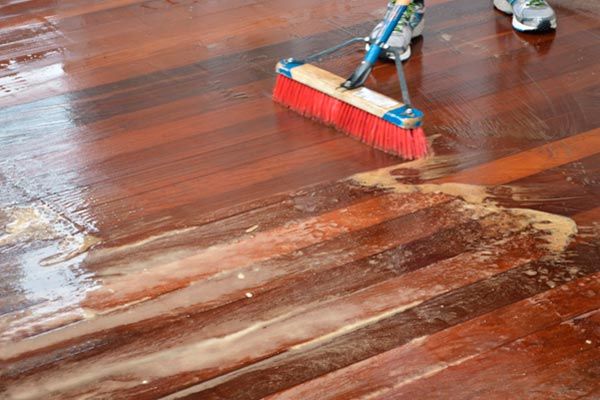
To clean a deck without damaging the wood, you need only three things—a pump sprayer to apply a wood cleaner that contains oxygen bleach, a soft-bristled brush, and a garden hose. That’s the way This Old House general contractor Tom Silva prefers to do it.
If you must use a pressure-washer, here’s how to minimize the risk of damage:
- Set the pressure no higher than 3,000 psi
- Use only a fan-tip nozzle (15º or wider)
- Hold the tip at least 12 to 16 inches from the surface—no closer—and keep it moving
Quick Hardwood Fixes: Debris
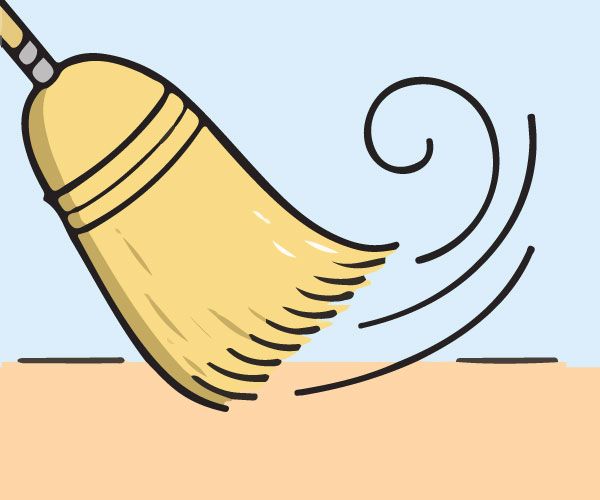
Don’t allow leaves, dog hair, and detritus to accumulate between the boards and promote rot. At least once a year, clear off the deck and give it a good sweeping and a light scrubbing with soap and water.
Quick Hardwood Fixes: Mildew and Algae
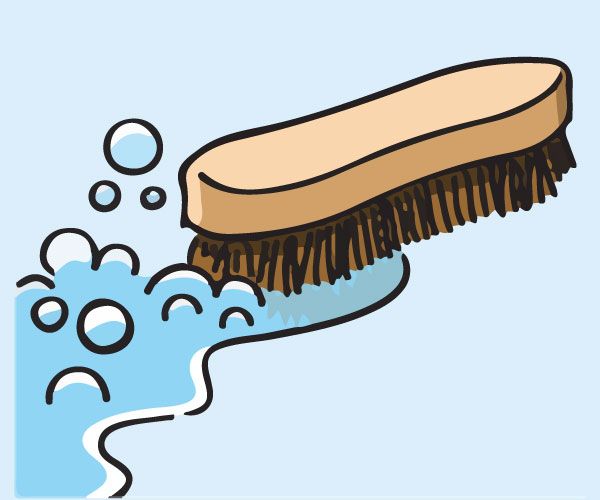
These can grow on any surface but are easily kept in check with regular cleaning, using oxygen bleach and a soft-bristled brush. Rinse with a garden hose and water.
Quick Hardwood Fixes: Scratches
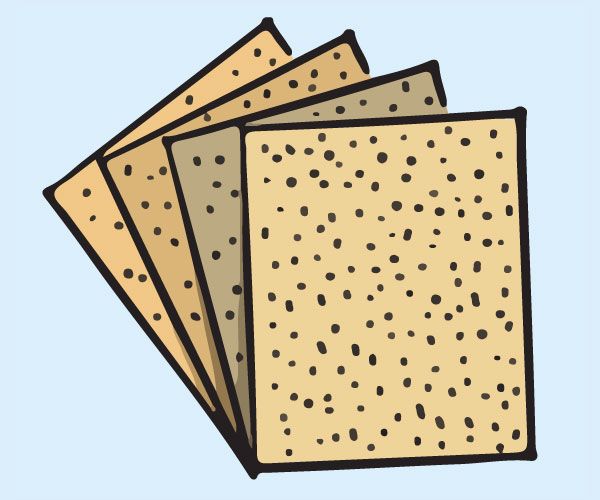
Erase them with a palm sander and 80-grit paper, then apply a penetrating oil.
Comparing Hardwood To Other Decking Materials
Understanding how hardwood compares to other decking options can help you make an informed decision for your project.
Hardwood vs. Pressure-Treated Lumber
Hardwood decking offers superior durability and aesthetics compared to pressure-treated lumber but at a higher cost. While pressure-treated wood is more affordable, it typically requires more frequent maintenance and replacement.
Hardwood vs. Composite Decking
Composite decking aims to mimic the appearance of hardwood while offering low maintenance. However, hardwood decking provides a natural, authentic look and feel that many homeowners prefer. Composites may also become hotter underfoot in direct sunlight compared to some hardwoods.
Hardwood vs. Softwood Decking
Softwood decking, such as cedar or redwood, is another natural wood option but does not offer the same durability as hardwood. Softwoods are often more affordable and easier to work with but may require more frequent maintenance and have a shorter lifespan compared to hardwoods.
Our Conclusion
Hardwood decking offers a beautiful, durable, and long-lasting option for homeowners looking to create a premium outdoor living space. Before deciding on hardwood decking, carefully consider your budget, maintenance preferences, and local climate. With proper selection, installation, and care, a hardwood deck can last decades and increase the value of your home.
